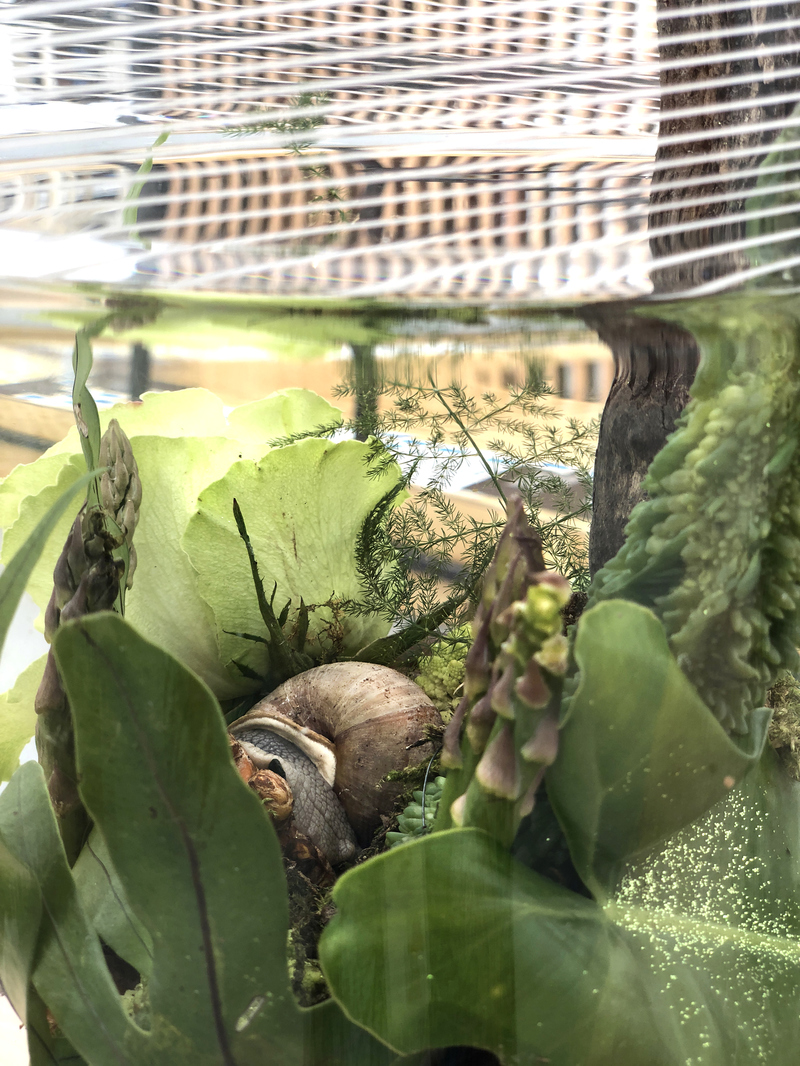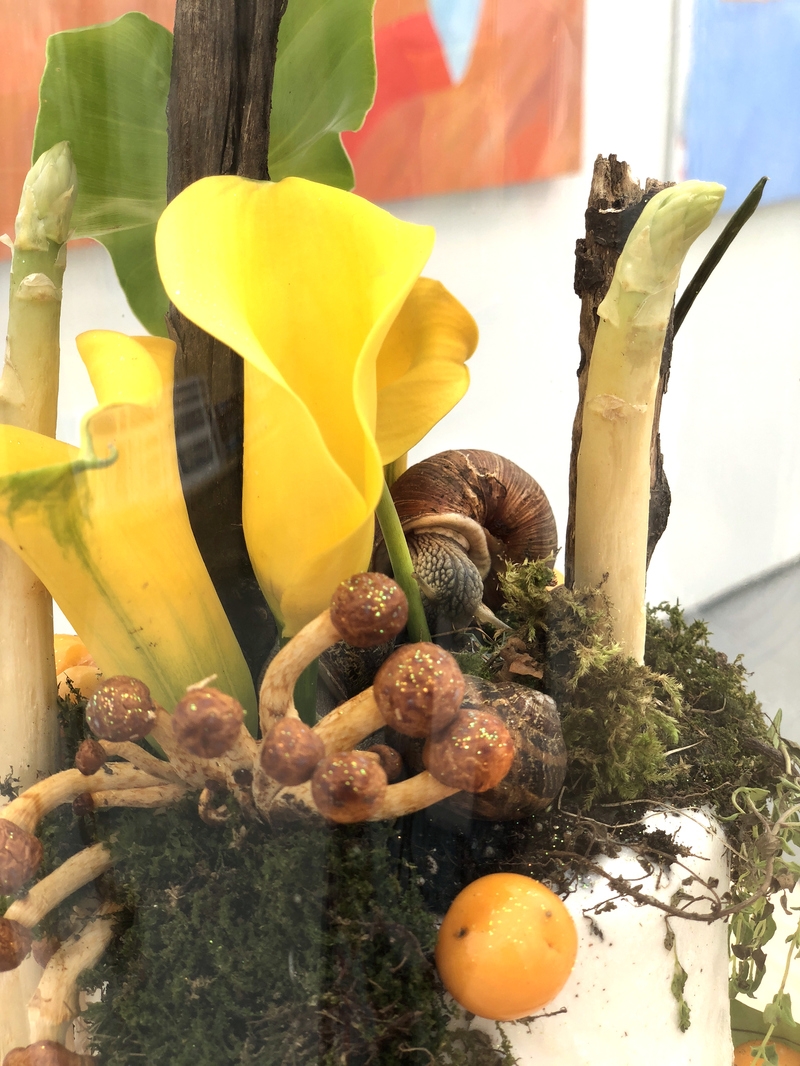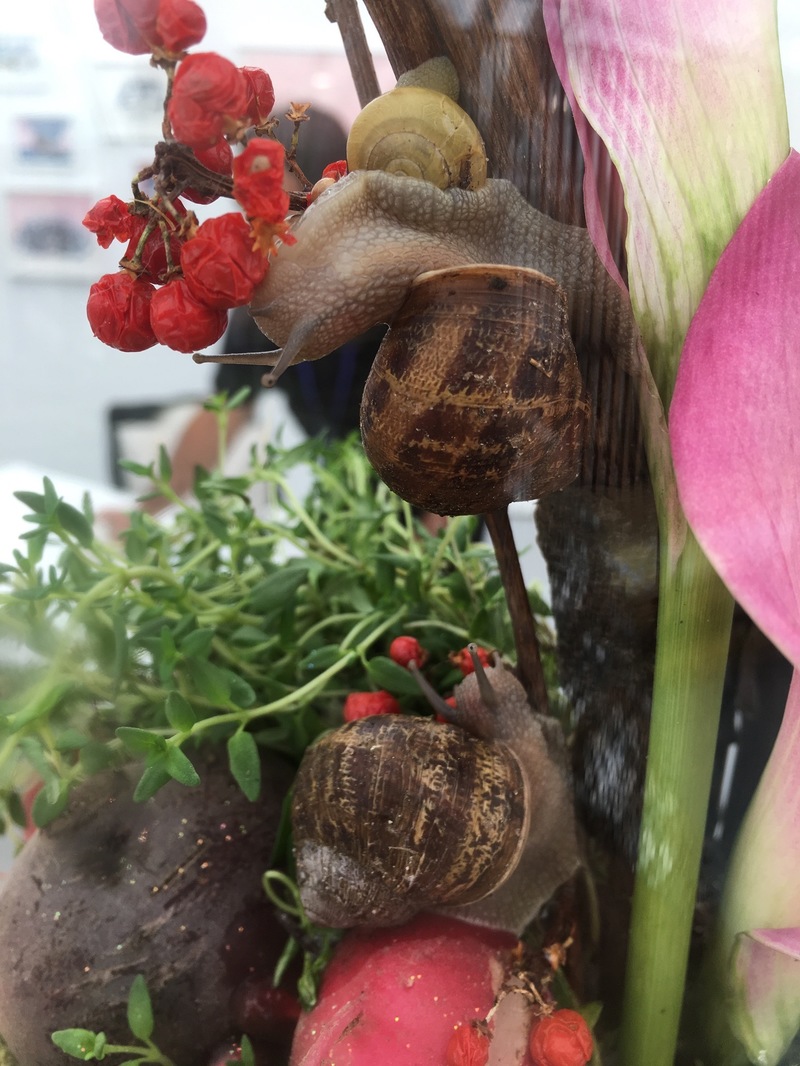Sculpture and Installation > The Confectionery Lives of Snails, 2017
The Confectionery Lives of Snails, 2017
The snails contained here under glass refer to the practice of Wardian Cases used by plant collectors of the 19th century to transport exotic new species across the ocean. The design is based on a model of flytrap, using honey to catch more flies through a large opening in the glass of which the flies would fly in but never out. They were made in collaboration with Dante Marioni while I was the artist in residence at Pilchuck School of Glass. While this feature performs a practical purpose of allowing air into the jar, snails are not flies, and the smaller ones have no trouble escaping. But this is not so much of a problem, as snails move quite slowly and I prefer to allow them some freedom of movement. As Konrad Lorenz, the animal behaviorist, writes about his experiences with many species of wild animals that lived freely in his house, you can not know the creature without giving it enough space to be itself. So the snails can come and go as they please, as long as they are kept from dangers such as being stepped on or eaten by other household members. While inside, they eat the cakes I have created for them which are a kind of hybrid pastry/topiary. The base is made from cake, but is then augmented with soil and growing plants, flowers and herbs as well as fruits and vegetables. Snails are the keepers of the mysteries. The spiral shell of the snail symbolized the cycles of life and death, and of nature. They are wet, ectoplasmic creatures; soft bodied, transparent, vulnerable, but they are completely self-contained and protected within the shell that they are born with and which grows larger and stronger as it accompanies them through life. They are powerful, tiny beings.








